Blaine Holmlund
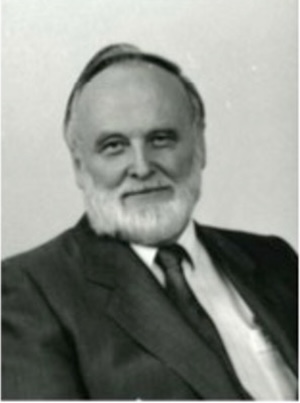
Blaine Holmlund was the founder and first Head of our department, then known as the Department of Computational Science. A 1955 graduate of the College of Engineering he worked variously for Shell Oil, the Atomic Energy of Canada and Sask Power before joining the U of S in 1958 as a lecturer in Electrical Engineering. He soon established a reputation as a builder with credits including the Division of Biomedical Engineering and the Hospital Systems Study Group in the middle 1960s. In the latter role Blaine became an early champion of networks of minicomputers as critical components of computer systems in the future. This work also led to the creation of a private company named BDM Information Systems, which became a very successful provider of minicomputer-based Pharmacy information systems in hospitals across North America. Blaine also founded the University Studies Group on campus to provide the institution with key planning data and analyses of performance in a number of areas.
In 1965 a recommendation was made to University Council that “a Department of Computational Science be created” to provide an academic home for the growing number of computing classes being introduced across the campus. This recommendation was formally accepted on March 1, 1966, and a year later a search committee recommended that Blaine, then Director of the Hospital Systems Study Group, be appointed Head, a position for which he neither applied nor was aware he was being considered. Nevertheless he accepted the position, assembled a somewhat ragtag faculty complement from resources scattered about campus, and the new department began offering courses in the 1968/69 academic year.
Throughout the early 1970’s Blaine led a period of growth as the initial teaching complement was bolstered by the addition of new faculty with academic training (and PhDs) more connected to the discipline, including John Cooke, Winfried Grassmann, Paul Tremblay, Bob Kavanagh, Paul Sorenson, Rick Bunt, Bob Probert and Grant Cheston. An Honours program was added to the original BSc General and BSc Advanced programs in 1971, a Commerce major was added in 1972, an MSc program was introduced in 1973 and the first of many curriculum development exercises began.
Blaine served as Head of the Department for seven years before moving on to other leadership positions in the University. These included Vice President (Special Projects), Vice President (Planning and Development), and ultimately Acting President for part of a year. He also served as Acting President of Saskatchewan Indian Federated College (now First Nations University) from November 1990 to June 1991, during which time he worked hard to develop lasting partnerships with First Nations leadership. In 1998 he was awarded an Honorary Doctorate.
On his retirement Blaine was able to look back with pride over a suite of successful university units that he established, including our department. He passed away in 2006.
Gail Walker
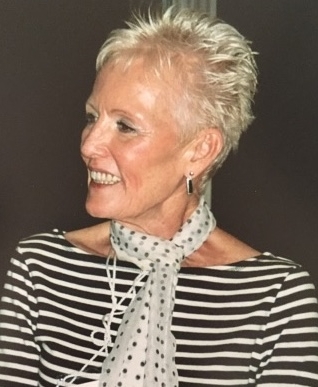
Gail Walker started work as Department of Computer Science secretary on July 16, 1974, moving over from the University Budget Office. She was hired by John Cooke, Department Head at the time, and went on to serve 7 Department Heads and Acting Heads. Gail retired (formally) in 2003 but was on medical leave for several years before this. She passed away on May 14, 2009. Her influence on the Department was immense.
At the time of her hiring the Department had 1.5 secretarial positions. The half time person spent much of her time typing manuscripts of Paul Tremblay textbooks. Gail did everything else. A 1977 memo described the 35 different tasks Gail was responsible for, broken down into six categories of Assistance to the Department Head (20%), Assistance to Faculty (20%), Assistance to Students (5%), Office Management (10%), Files and Student Records (15%) Accounting Procedures (25%), and Miscellaneous (10%). One of the categories, Assistance to Students (5%), itself comprised six tasks.
Over her nearly 30 years in the Department these duties only got more complex and time consuming as the Department grew substantially in numbers of faculty and students, while growing only slightly in resources for administrative support. Gail was eventually rewarded for the expansion of her responsibilities in the mid-1990’s when her job was re-classified as an administrative position in ASPA rather than a secretarial position in CUPE. It remains in ASPA today as a lasting legacy to Gail’s efforts.
Despite her many formal duties, Gail always defined her “prime directive” to be universal helper to all: students, staff, and faculty. Although she was very busy, she was never too busy to stop what she was doing and help anyone who came by seeking information, or assistance, or just plain solace. That is why she was so well regarded and respected by literally thousands of people who she helped, dealt with, and sometimes endured during her long career. It is fair to say that the Department’s well-regarded reputation for collegiality throughout her decades of service owes a lot to Gail’s people skills and genuine concern for others. It is also true that every Department Head with whom Gail worked could not have managed their duties without her efforts. She was most certainly a central figure in Department history.
Jim Greer
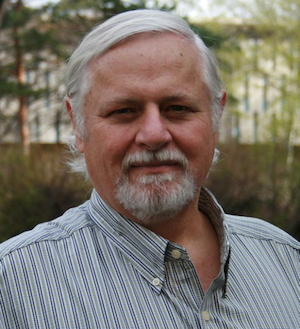
Jim Greer was a faculty member in the Department of Computer Science for 30 years, until his untimely death in 2018. Throughout his life Jim maintained a profound commitment to teaching and learning, earning many degrees himself, teaching at the high school and university levels, taking leadership roles in improving the teaching and learning environment at the University, and in his research exploring deep issues in advanced learning technology. Jim won the University’s Master Teacher Award in 1998 and its Distinguished Graduate Supervisor Award in 2005, and was awarded the Saskatchewan Centennial Medal in 2006 by the province, which “recognizes individuals who have made significant contributions to society and honours outstanding achievements”.
After finishing his Ph.D. at University of Texas in 1987, Jim came to the Department of Computer Science as a postdoctoral fellow prior to joining the faculty ranks in 1989. In 2000 Jim was drafted to serve as a Head of the Department. And a vigorous Head he was. He initiated “Growth Plan 2000” that resulted in direct funding from the province that allowed a 25% increase in faculty numbers and a tripling of the staff complement. He also presided over the Department’s move from its location in the Engineering Building to vastly expanded new space in the Thorvaldson Building and the Spinks addition. Collegiality was a hallmark of his time as Head, with a highlight being the Department’s 35th anniversary celebration in 2003. He and a band of fellow conspirators also perpetrated numerous innovative and elaborate pranks that enhanced the atmosphere around the Department (how do you make an office disappear?)
After his time as Head, Jim moved into senior leadership positions at the University, becoming Director of the Centre for Teaching and Learning as well as of the Gwenna Moss Centre for Teaching Effectiveness, from which positions he was able to coordinate the development of a wide variety of activities aimed at improving teaching and learning at the University. He ended his career as a Senior Strategist of Learning Analytics, where he toured the campus as a freelance evangelist for the power of “learning analytics” and data mining to shed light on teaching and learning issues.
Throughout his career Jim was also a very active researcher in the areas of advanced learning technology (especially artificial intelligence in education - AIED) and user modelling and personalization (UMAP). In 1987 he and Gord McCalla co-founded the ARIES Laboratory, a lab that went on to forge an outstanding worldwide reputation in AIED and UMAP. He served as President of the International AIED Society, Chair of UM, Inc. (UMAP’s coordinating organization), as well as chairing and serving on numerous conference program committees and journal editorial boards. Overall, Jim was author or co-author of some 140 scientific papers. However, Jim will be most remembered for his mentoring role. Not only did he supervise or co-supervise over 30 graduate students at U of S, but numerous researchers in AIED and UMAP from all over the world tell stories of how inspirational and supportive Jim was, especially at the beginning of their research careers.
John Cooke
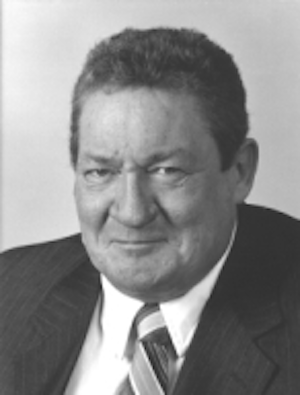
John Cooke was born in 1935 in Reading, England, and his earliest memories were of having a front seat view of the Battle of Britain, and surviving on war rations. After his school years John attended London University where he earned a Bachelor of Science degree in 1958. He followed up with a Masters in Electrical Engineering from the University of Saskatchewan (1960), and a Doctorate of Philosophy in Experimental Psychology from Oxford (1965). Returning to Saskatoon, John joined the University as an assistant professor in the College of Commerce in 1965. But his interest in computing and the connections between computing and cognition soon led to collaborations with the newly formed Department of Computational Science. In 1971 he officially transferred into the new Department. In 1972 he became acting Department Head and then served as its second Head from 1974 to 1981. As University budgets tightened during the 1970s John saw the need for what had been an independent Department of the University to join a College in order to gain more support for its rapidly growing undergraduate and graduate programs, which led to the Department joining the College of Engineering at the end of his term.
John was a visionary, recognizing early on that the future lay not in centralized mainframe computing but in distributed and local computing integrated through networks. This led to many battles in the 1970s and early 1980s with centralizing forces at the University and in the government, to maintain our independent Department computing facilities and to modernize the University’s computing infrastructure. Despite these battles, John was not actually a confrontational person by nature. He had a talent for knowing how to get the best out of people and treated everyone fairly, even in difficult circumstances. John was a “true mentor” who had a lasting influence on students’ and colleagues’ lives, and on the Department. During his years of leadership, John set a tone of collegiality, respect, and fun that left a legacy in the Department that continues to this day. Due to this collegiality, the Department’s faculty recruiting advertisements decades later were able to claim that the Department had the “best climate in Canada”!
However, what John would want people to remember most about his University life is that he cared deeply about excellent teaching. He was loved by his students because he worked tirelessly to keep his expertise and classes exciting and on the cutting edge of a rapidly changing discipline. He was deeply involved from the very beginning of the Department to the end of his career in curriculum innovation and renewal, so necessary in such a field. He didn’t confine his teaching to the campus. He taught short courses at the Banff School of Advanced Management as well as working on distance and web-based learning systems as a primary research focus in the latter part of his career. He supported continuing professional education, authoring, for example, several monographs that were distributed to all members of the Society of Management Accountants of Canada to help them deal with the transformative effects of information technology on their field. In 2005, he was honoured by IBM as a pioneer of computing in Canada.
John retired in 2003, after almost 40 years as a professor. He died peacefully on December 10, 2015 in Winnipeg, Manitoba, near his home and family. John will be admired and remembered for his wisdom, generosity, integrity, and perhaps mostly for his mischievous, intelligent sense of humour. And, of course, for his lifelong passion for opera!
Kathleen Booth
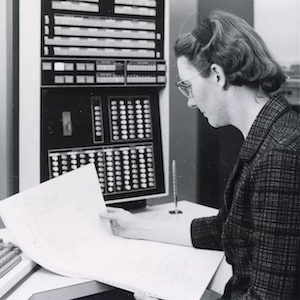
Although she was in the department for only a short period of time we are honoured to have had an acknowledged pioneer of computing as one of our founding faculty members.
Kathleen Booth came to Saskatchewan in 1962 from Birkbeck College at the University of London with husband Andrew who had been appointed first as Chair of the Department of Electrical Engineering and then Dean of Engineering shortly thereafter. The Booths were true pioneers. While at Birkbeck they designed and built early computers that competed successfully with much larger, much better funded and much better known efforts at Manchester (whose team included Alan Turing) and Cambridge (whose team included Maurice Wilkes). Working with very limited resources the machines that Andrew and Kathleen built in the post-WW2 years subsequently provided the basis for the best-selling British computers of the early 1950’s. Essentially Andrew designed the computers and Kathleen programmed them. It was in programming that Kathleen made her most significant contributions. She is considered by many to be the inventor of assembly language, she taught one of the first courses anywhere on programming computers and she wrote one of the first books on the subject.
In 1968 Kathleen was appointed by Blaine Holmlund to the faculty of his newly-formed Department of Computational Science, the first department faculty member to hold a PhD. She participated in the development of the department’s first curriculum, taught a variety of courses and did research in machine translation of natural languages. She and Andrew left Saskatchewan for Ontario in 1972 for Andrew to become President of Lakehead University. Kathleen died in 2022 in Sooke, BC, at 100 years of age.
Kathleen’s pioneering work in the early days of computing earned her a plaque in Britain’s National Museum of Computing at Bletchley Park. The citation reads,
Kathleen Booth is credited with writing the first assembly language programming books for the first computer systems at Birkbeck College, University of London.

